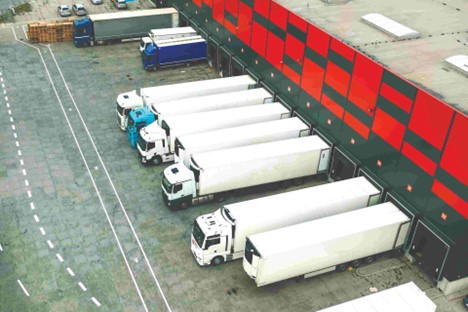While presenting a summary of the best supply chain logistics strategies on the webinar, Brian Whitlock, Senior Director of Analytics at Gartner stated that logistics and supply chain leaders should benchmark subject to disruption in the upcoming 2023.
The logistics industry has been through a difficult time in recent years and things have become more fragmented, volatile and unpredictable than before. With all business activities suspended due to the Covid-19 pandemic, the supply of essential goods and services has had a negative impact on the entire industry.
While summarizing supply chain logistics best practices in a webinar, Brian Whitlock, Senior Director of Analytics at Gartner stated that logistics and supply chain leaders should be prepared for new disruptions excluding weather and natural disasters, manpower shortages, port congestion, etc.
Preparing in advance for such a large market movement requires businesses to develop new tactics and adopt new strategies. They will be able to successfully exploit these new directions by continuing to understand and follow the new and emerging logistics trends of the time.
Here are a few trends that are expected to transform the entire logistics industry in 2023:
1. Improvements in RFID technology
The revenue of the global Radio Frequency Identity (RFID) Technology market is expected to reach a value of USD 17.6 million by 2028.

Having existed for more than a decade, RFID can provide real-time tracking data. However, even with the substantial investment of the delivery businesses (OFDs), RFID is still struggling to get any rate of return from the technology. This shows that using RFID will always give you access to the data you need.
Here, things will be better when businesses set up RFID chip systems to collect and share data. Not only that, logistics businesses should pre-install data integration technology to connect the necessary devices to the main system of the business, when all data is stored and analyzed. This will provide businesses with deeper insights and can perform better, proactively building new strategies.
2. Stepping into the future of digital transformation
Logistics and supply chain leaders have always been concerned about the ever-faster pace of integration in the current digitalisation. However, recent security events have pointed to many new vulnerabilities in the current supply chain landscape, giving yet another good reason for digitization to evolve. The supply chain digital transformation will innovate the supply chain with a focus on incorporating digital technology into various activities on the supply chain. Successful logistics and supply chain digitization streamlines, improves, and makes your supply chain processes more agile.
3.Last mile delivery
Last Mile Delivery is one of the prerequisites driving the entire logistics industry forward. However, as this is the final step in the delivery process, where goods and services are moved from the point of distribution to the final destination, the Last Mile Delivery process is still quite costly. The complexity and costs involved are exacerbated by the growing need for fast delivery, which drives businesses to further deploy the latest technology solutions.
Recent developments in this area show us that last mile delivery is being pushed to its limits. There are many factors to consider when trying to optimize this process. With the advent of autonomous delivery drones and the adoption of key new technologies, the future of logistics will be exciting. More efficient last-mile delivery practices keep customers happy and satisfied, resulting in business growth, brand loyalty, and better returns for everyone.
4.The need to reduce greenhouse gas will increase above all

No industry has been hit harder by the COVID-19 pandemic than logistics. However, as things began to return to normal in every part of the world, the industry bounced back. At the same time, the emissions from here also increase rapidly, making the environment much worse. Freight transport contributes 8% of global greenhouse gas emissions (11% if warehouses and ports are included), and logistics will become the highest carbon emitter by 2050. Therefore, the leaders Logistics leaders are taking steps towards more optimal decarbonisation.
Investors worried about the material risks posed by climate change have developed new reporting frameworks, such as the reporting framework of the Sustainability Accounting Standards Board (SASB) and the Force Task Force on Climate-Related Financial Disclosures (TCFD). Achieving reductions in greenhouse gas emissions will require the industry as a whole to take stringent measures and be ready to embrace changes that can transform these emissions in the most fundamental way.



























































































